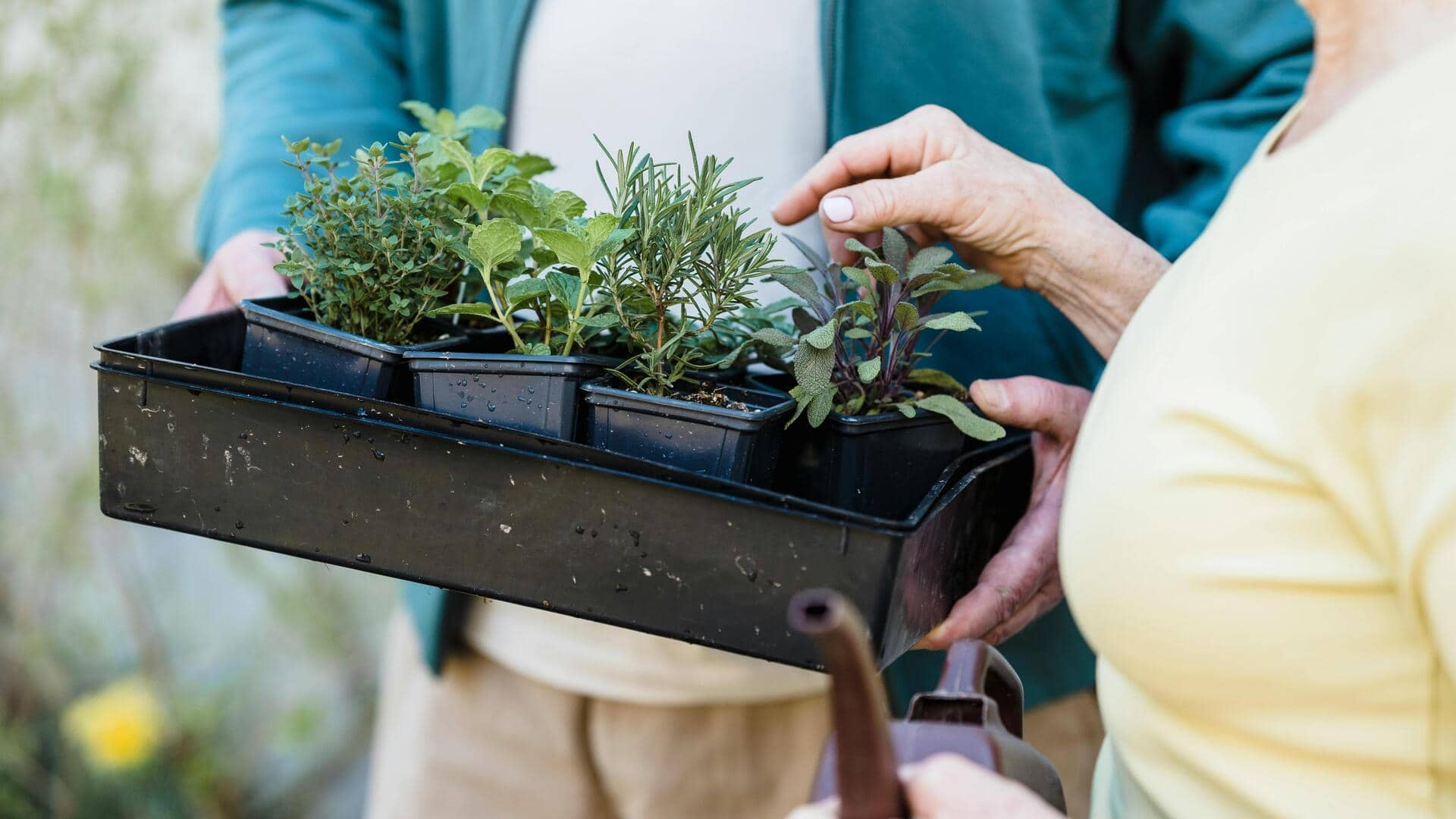
Tips to grow healthy thyme in your garden
What's the story
Growing thyme in your backyard is a rewarding experience, thanks to its aromatic leaves and low-maintenance nature. This herb, which is a staple in many kitchens, flourishes in sunny spots with well-drained soil. If you want to grow thyme, knowing its requirements and care tips is important. Here's a guide with practical insights to help you grow thyme successfully in your backyard.
Tip 1
Choosing the right location
Selecting the right location is key to growing healthy thyme. The herb flourishes in full sun, so pick a spot that gets at least six hours of sunlight every day. Make sure the area has good drainage, as thyme doesn't like sitting in waterlogged soil. Avoid shady areas or places where water tends to collect after rains.
Tip 2
Preparing the soil
Preparing the soil properly before planting is essential for thyme's growth. It prefers sandy or loamy soil with a pH level between six and eight. To improve drainage, mix organic matter like compost or well-rotted manure into the soil. This not only enhances fertility but also ensures that the soil retains moisture without becoming waterlogged.
Tip 3
Planting thyme seeds or seedlings
You can either sow seeds directly into prepared beds or plant seedlings for quicker results. If sowing seeds, do so in spring when temperatures are consistently warm. Space them about 12 inches apart to allow for growth. If using seedlings, transplant them carefully after ensuring they have developed strong roots.
Tip 4
Watering and maintenance tips
Thyme requires minimal watering once established but needs regular watering during dry spells until mature. Water deeply but infrequently to encourage deep root growth; avoid overhead watering as it may lead to fungal diseases on leaves. Prune regularly by trimming back stems after flowering to promote bushier growth without affecting overall yield significantly.
Tip 5
Harvesting your thyme crop
Harvesting thyme at the right time ensures maximum flavor retention. Harvest leaves just before flowering for the best taste. Use sharp scissors or pruning shears to cut stems. Avoid damaging the plant. This encourages new growth and prolongs the harvest period. Regularly prune to maintain plant health and productivity, ensuring a continuous supply of fresh thyme for culinary use.